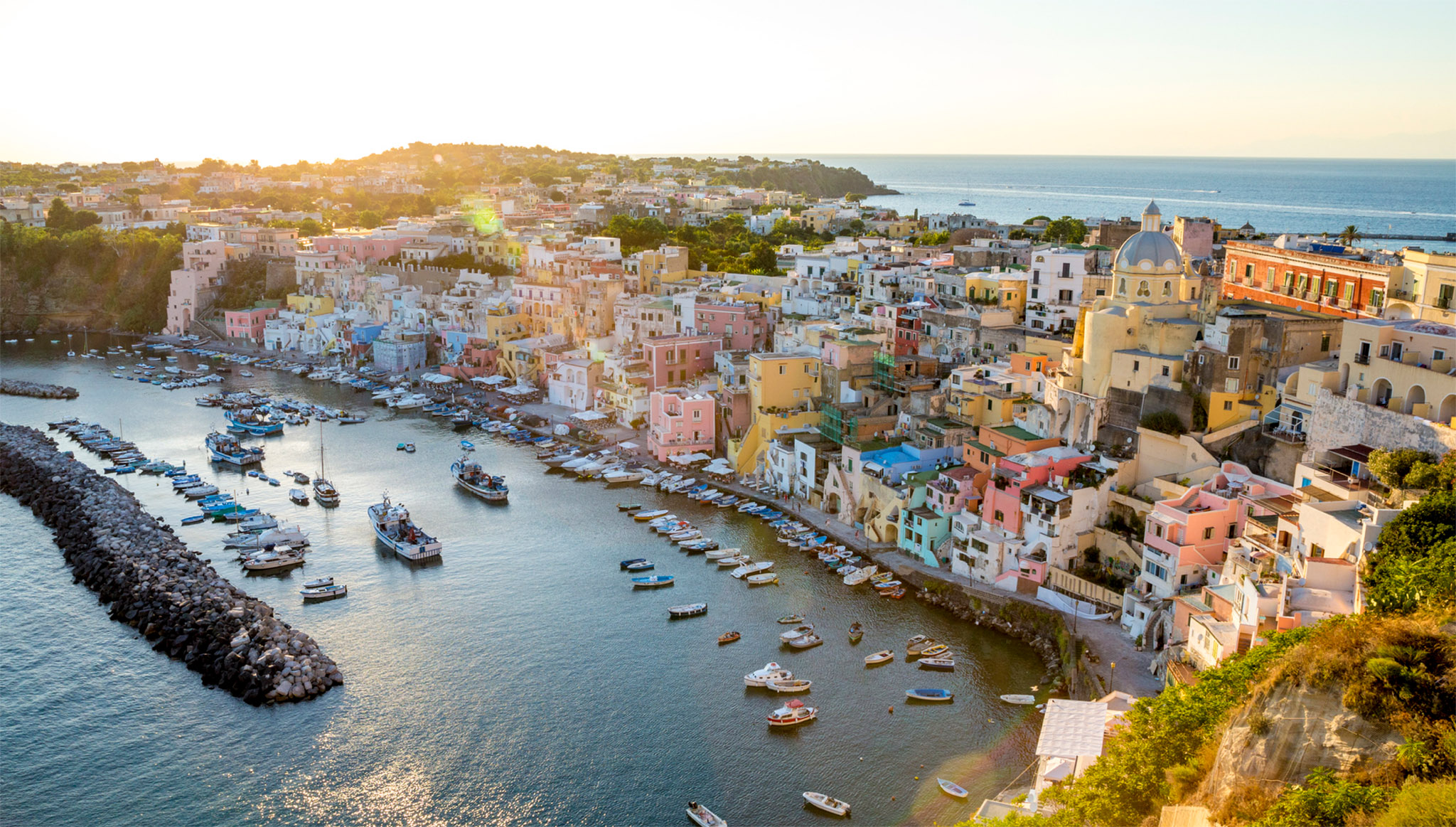
t A marble-covered hall in the Palazzo Reale of Caserta, Italy’s largest royal palace
This town’s 1st-century-AD Roman amphitheatre used to be Italy’s largest after the Colosseum. There are well-preserved tunnels beneath it. The town occupies the site of ancient Capua, the scene of the revolt of the gladiators led by Spartacus in 73 BC. The on-site Gladiator Museum recreates their history. Nearby is a Mithraeum (2nd–3rd century) with well-preserved frescoes. Finds from the sites are shown in the Museo Archeologico dell’Antica Capua in Capua.
" ⌂ Piazza 1 Ottobre § 0823 79 88 64 # Tue–Sun
" ⌂ Via Roberto d’Angio 48, Capua § 0823 84 42 06 # Tue–Sun

t A marble-covered hall in the Palazzo Reale of Caserta, Italy’s largest royal palace
The magnificently opulent Palazzo Reale dominates Caserta. Built for the Bourbon King Charles III, Italy’s largest royal palace boasts over 1,000 rooms, grand staircases and richly adorned apartments. It was designed by Luigi Vanvitelli, and construction started in 1752. The surrounding park is dotted with fountains, ornamental waterworks and statuary.
San Leucio, 3 km (2 miles) northwest of Caserta, is a model town built by Ferdinand IV, who also founded its silk industry.
" ⌂ Viale Douhet 2a § 0823 44 80 84 # 8:30am–7:30pm Wed–Mon ¢ Pub hols
The Roman city Beneventum was an important centre at the end of the first extension of the Via Appia from Capua. The well-preserved Arch of Trajan on Via Traiano was built of marble in AD 114–166. The relief sculpture adorning it – scenes from the life of Trajan and mythological subjects – is in excellent condition.
Elsewhere, evidence of the Romans is to be found in the ruined Roman theatre, built during Hadrian’s reign, and in the Museo del Sannio, which contains artifacts from the region, from ancient Greek finds to modern art.
During World War II, the city stood directly in the way of the Allied advance from the south. It was heavily bombed, hence its largely modern appearance. Benevento has centuries-old associations with pagan worship, and a liqueur called Strega (witch) is made here.
" ⌂ Via Teatro Romano 3 § 082 45 04 06 # Mon–Sat ¢ Public hols
" ⌂ Piazza Santa Sofia 1 # 9am–7pm Tue–Sun ¢ 1 Jan, 25 Dec ∑ museodelsannio.it
The big, busy port of Salerno is visited today for its 11th-century Duomo. Its best feature is the Atrium, whose columns came from Paestum. In the crypt is the Tomb of St Matthew, brought here in 954.
The Museo Diocesano is home to most of the cathedral treasures, while local archaeological finds are in the Museo Provinciale.
South of Salerno, the Cilento is a mountainous region with a remote interior and a lovely coastline. Outside Castellammare di Velia, 70 km (43 miles) south of Salerno, are the ruins of the Greek town of Elea (founded 6th century BC). Excavations have revealed a magnificent 4th-century Roman gateway, Roman baths and the remains of the acropolis.
⌂ Largo Plebiscito 12 § 089 23 91 26 # 9am–1pm & 3–7pm Thu–Tue
⌂ Via San Benedetto 28 § 089 23 11 35 # 9am–7:30pm Tue–Sun
The Greeks founded this city in the 6th century BC and called it Poseidonia, the City of Poseidon. The Romans renamed Paestum in 273 BC. It was abandoned in the 9th century due to malaria and a Saracen assault, and rediscovered in the 1700s.
Paestum has three massive Doric temples in an excellent state of repair: the Basilica or Temple of Hera I (mid-6th century BC); the Temple of Neptune (5th century BC), the largest and most complete at Paestum; and the Temple of Ceres, thought to date between its two neighbours.
Excavations have revealed the remains of the ancient city, its public and religious buildings, roads and protective walls. A museum contains the extensive finds from the site, including tomb treasures, some terracotta votive offerings, architectural fragments and sculpture.
" # Daily ¢ From 1:40pm on 1st & 3rd Mon of month

t Corricella, a colourful village on the island of Ischia
Ischia is the biggest island in the Bay of Naples and, with its beach resorts, thermal springs and therapeutic mudbaths, it is nearly as popular as Capri. The northern and western shores are developed; the southern flank of the island is the quietest. Here, the village of Sant’Angelo is dominated by a long-extinct volcano, Monte Epomeo, whose summit offers views across the bay. Also worth a visit are the gardens of La Mortella in Forio.
The tiny, picturesque island of Procida is less visited and very tranquil, with good swimming at Chiaiolella.
" § 081 98 62 20 # Apr–Oct: 9am–7pm Tue, Thu, Sat & Sun